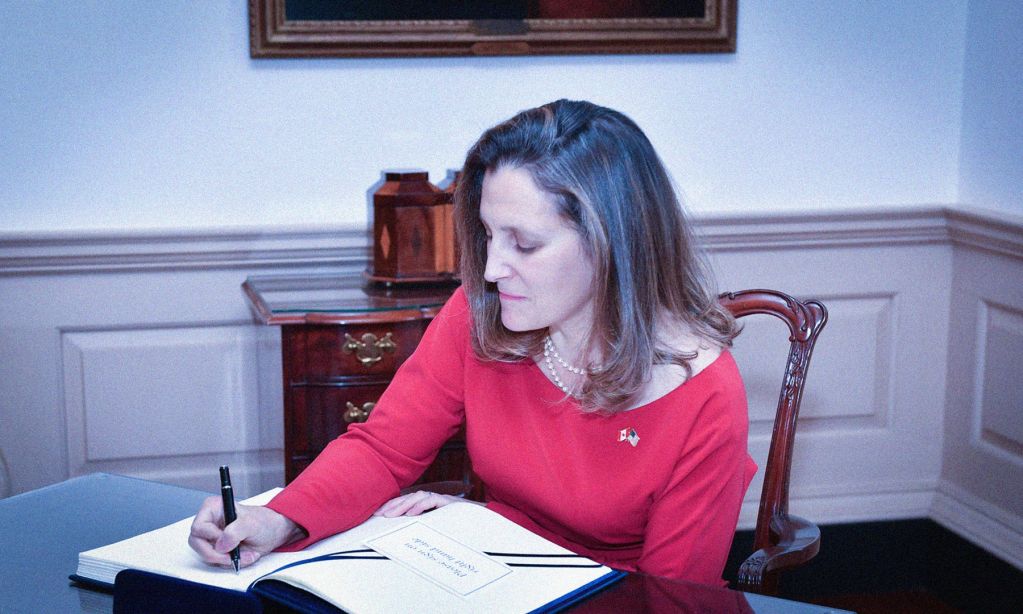The federal government’s 2024 budget includes generational investments on housing affordability and runs a victory lap on health care expansion, but it is quiet on key issues such as climate.
This year’s federal budget sends strong signals that the governing party is gearing up for a fight in the coming year and is trying to change Canadians’ perceptions of its legacy—especially on hot button issues such as housing and affordability.
Big new federal investment in housing
This year’s budget includes a previously announced $1.5 billion Canada Rental Protection Fund, which will loan $1 billion and contribute nearly $500 million to construct non-profit housing projects, with the goal of doubling the market share of social housing—from its current four per cent of total housing stock, up to a target of eight per cent, in line with the average of other rich countries.
“The feds are acting boldly on housing while the provinces dither on—if not outright oppose—much-needed action,” says David Macdonald, a senior economist with the Canadian Centre for Policy Alternatives. “Unfortunately, the major payoffs of these measures won’t be for two to three years, well after the next election, but at least there’s movement forward.”
Ricardo Tranjan, political economist at the CCPA Ontario office, agrees. “This government has done more for housing than previous, more recent federal governments, and its current level of resolve outpaces that of most provincial governments.”
“The new fund is a good start," Tranjan says, "but it needs to roll out of the door fast and be an ongoing program, not a one-off.”
For Macdonald, this budget should be understood as one in which “federal action is finally beginning to match the scale of the housing crisis.”
However, he says, the types of new funding announced in this budget won’t pay off for years. And they still don’t speak to two big blocks to ensure more affordable housing.
“The truth is that there are two things that will bring down housing costs fast—lower interest rates and rent controls,” Macdonald says. “The Bank of Canada controls one and no one wants to broach the other, so the closest we’ll come will be a relatively limited program for non-market housing construction.”
Macdonald warns that non-marketing housing still isn’t getting its due. “By contrast, the Construction Loans Program for private developers just got 10 times more money from the feds, even though it has only managed to get half of its previous government money to build more housing out the door.”
“There are some worthy new initiatives in the budget that will help a dire situation across the country,” says CCPA BC Senior Economist Marc Lee. “Missing from the multitude of new initiatives is a substantial commitment to build new non-market housing, which would pay for itself over time through rents. Other aspects of the new federal plan are just recycled pieces from the 2017 National Housing Strategy, a plan that failed to live up to federal hype.”
The feds also announced a new “renters’ bill of rights,” which, if implemented, would allow for tenants to know the price that previous tenants paid for apartments and have rental payments count towards improving their credit scores. It’s an improvement, but it’s still not rent control.
Higher capital gains tax on the rich
The government made a surprise announcement on taxation in this budget: it will impose a higher tax on capital gains above $250,000 a year, bumping that rate from 50 per cent to 66.6 per cent for the richest Canadian’s investment income.
“It’s a welcome step forward—something we’ve been calling for since we started reporting on CEO pay in Canada,” says the CCPA’s David Macdonald. “This will raise an estimated $7 billion in the first year and $20 billion over the next five, and will be paid by the top 0.13 per cent—or 40,000 people. We’ve been advocating for this type of tax increase on top-earners for a long time. If your capital gains are over $250,000 per year, you can afford to contribute more to public services—it’s a question of fairness.
From 1988 through 2000, the capital gains tax rate was at—or above—the proposed 66.6 per cent. Over that decade, it wasn’t on just the top $250,000 in capital gains, it was on all of them.
“Of course, a surtax on oil and gas or a wealth tax would have yielded the government significantly more,” Macdonald says. “But if this is the government’s response to spending concerns, let’s bring it on. It’s about time we look at Canada’s revenue problem.”
The NDP’s health care expansion plans are coming into effect
It’s been just over two years since the Liberals and the NDP signed a supply-confidence agreement, where they agreed to work together on specific issues in exchange for continued mutual support on confidence votes. The agreement has allowed the two parties to keep a minority parliament in session without calling an election and will run out at some point between now and October 20, 2025.
The big ticket items on the NDP’s list of priorities were focused on public health care expansion, particularly on bringing dental care and pharmaceuticals under the banner of publicly covered health care. With this winter’s announcement of a new pharmacare program, which will publicly cover diabetes medication and contraception as a beginning, those goals are now being implemented. The budget doesn’t specify a launch date for the program nor provide many new details. The money starts to flow in this fiscal year.
“While the pharmacare program is still quite limited in scope, it represents the most tangible steps towards universal pharmacare that we’ve ever seen in this country,” Macdonald says. “Combined with dental care, the confidence and supply agreement has driven major changes in the health care landscape in a very short period of time.”
The other major care economy expansion in recent years has been in child care, where the feds have now implemented countrywide $10 per day child care. For CCPA Senior Researcher Katherine Scott, that program is a major step in the right direction—but it still needs significant work.
“Canada is finally on the way to creating a countrywide system of early learning and child care that is affordable, inclusive and accessible,” Scott says. “The new $1 billion dollar Child Care Expansion Loan Program to support new child care spaces is welcome, but only $60 million of it will be grants to public and not for-profit child care providers. But the efforts to build a vibrant and viable system are now at risk, mired in jurisdictional conflict, stymied for lack of staff, and under attack from for-profit providers and private equity interests seeking larger stakes in service delivery.”
Scott says that in order for the newly expanded child care system to function properly, it needs to address the stark lack of spaces available in most regions of Canada. Doing so will require explicit funding for improving working conditions and attracting workers to a field, which is desperately short of the staff it needs.
“Addressing the low wages and poor working conditions of care workers is central to any plausible or just strategy for addressing Canada’s care deficit,” she says. “Yet the budget is silent on this critical issue.”
In a surprise announcement, the feds unveiled detailed plans for a long-discussed but never-before implemented Canada Disability Benefit at $2,400 per year, starting in July 2025.
“This amount is completely inadequate,” Scott says. “The budget ‘aspires’ to have support like the Old Age Security program, which would provide roughly $20,000 a year. We’re a long way from that aspiration, but we’re now further along than we’ve ever been.”
Climate: an addendum to last year's budget
Last year’s federal budget went big on climate spending—providing $60 billion in new funding, mosting in large-scale “incentivization” for private sector development of renewable energy and green industry. This budget adds an addendum to that in the form of a new EV Supply Chain tax credit. Similar to credits last year, just applying to some parts that fell through the cracks last year
“A $903.5 million program for energy efficiency improvements in low-income housing is a welcome measure,” says CCPA Senior Researcher Hadrian Mertins-Kirkwood. “But it falls short of the $2.6 billion Greener Homes Grant that it replaces and is not even in the ballpark of the $20-40 billion per year that Efficiency Canada estimates is necessary for decarbonizing Canada’s broader building stock.
“Other top priorities of the climate movement, such as a green job creation program and a windfall tax on oil profits, didn’t make the cut.”
It’s not like the climate crisis is going away, but the ambition in last year’s budget melted away in this year’s budget.
For Stuart Trew, director of the CCPA’s Trade and Investment Research Project, there was a major climate oversight in this year’s budget, related to a common provision in free trade and investment agreements—investor state dispute settlement (ISDS), tribunals where investors can sue governments for taking regulatory action that reduces their profits. Canada is currently facing two major ISDS suits related to climate policy—and Canadian firms are responsible for a significant number of such cases abroad
“The federal government should create a team within Global Affairs Canada to plan the removal of ISDS from all of Canada’s existing trade and investment treaties,” Trew says. “The budget should have announced that from this day forward, Canada will no longer include ISDS in international treaties consistent with Minister Freeland’s assertion, in 2018, that these investment protections interfere with other governmental priorities such as protection of the environment and public health.”
For Mertins-Kirkwood, “the federal government appears to be resting on its climate laurels, despite current policies being inadequate for achieving net-zero greenhouse gas emissions by 2050.”
Generational fairness?
Finance Minister Chrystia Freeland has said that this budget is about easing pressure on younger generations, which are disproportionately likely to be affected by the housing and affordability crises—as well as the climate crisis, despite the relative quiet on that front in this year’s budget.
That prioritization shows up elsewhere as well, including in a newly announced national school food program, which aims to reduce the number—currently one in four—of children who don’t get enough to eat, largely because of high food and housing costs. The federal budget creates a new program that seeks to reach up to 400,000 children, but it is critically light on details, says CCPA National Office Director Erika Shaker.
“Countries that are investing in impactful national food programs start with making them universal, so that every student can get access to a nutritional meal—that helps reduce the stigma around food insecurity,” Shaker says. “This program is far from universal but hopefully it will become so over time.
Of course, principles around generational fairness aside, this budget is also about political survival. The governing Liberals are in a serious polling slump, and the opposition Conservatives are hammering them hard on housing and affordability. This budget is an attempt to take back control of the narrative.
The next election will be no later than October 2025. If this budget is any indication, the federal government is aware that it needs to be more ambitious if it is to have any chance of surviving.







